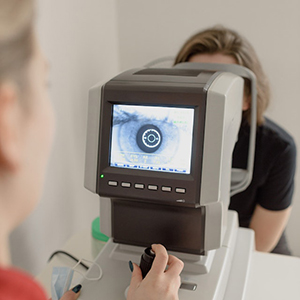Pattern and sweep visual evoked potential in the objective determination of visual acuity

HTML: 100
All claims expressed in this article are solely those of the authors and do not necessarily represent those of their affiliated organizations, or those of the publisher, the editors and the reviewers. Any product that may be evaluated in this article or claim that may be made by its manufacturer is not guaranteed or endorsed by the publisher.
Authors
The purpose was to investigate the effects of pattern visual evoked potential (pVEP) and sweep visual evoked potential (sVEP) on the accurate visual acuity (VA) measurement in adults. Medical files of 282 eyes of 141 patients who underwent VA measurement in our electrophysiology laboratory and did not undergo simulation were retrospectively analyzed. The VA was measured using the Snellen chart. Only those with a VA of higher than 1/10 on the Snellen chart were included in the study. The VA was assessed and reported by the pVEP (VA-pVEP) and sVEP test (VA-sVEP). The correlation analysis was performed using the Pearson correlation analysis. Of 141 patients, 92 were males and 49 were females with a mean age of 37.7±18.4 years. There was a strong positive correlation between the VA measured by the Snellen chart and the VA measured by pVEP (VApVEP) (r=0.858, P<0.001). There was a weak positive correlation (r=0.267, P<0.001) between the VA measured by the Snellen chart and the VA measured by the sVEP (VA-sVEP). A weak positive correlation was found for the VA-pVEP and VA-sVEP (r=0.313, P<0.001). For the measurement of the degree of the VA, it seems reasonable to use pVEP initially, while sVEP should be used in cases with short attention span and those who are noncooperative and in infants.
How to Cite

This work is licensed under a Creative Commons Attribution-NonCommercial 4.0 International License.
PAGEPress has chosen to apply the Creative Commons Attribution NonCommercial 4.0 International License (CC BY-NC 4.0) to all manuscripts to be published.

 https://doi.org/10.4081/itjm.2022.1556
https://doi.org/10.4081/itjm.2022.1556



